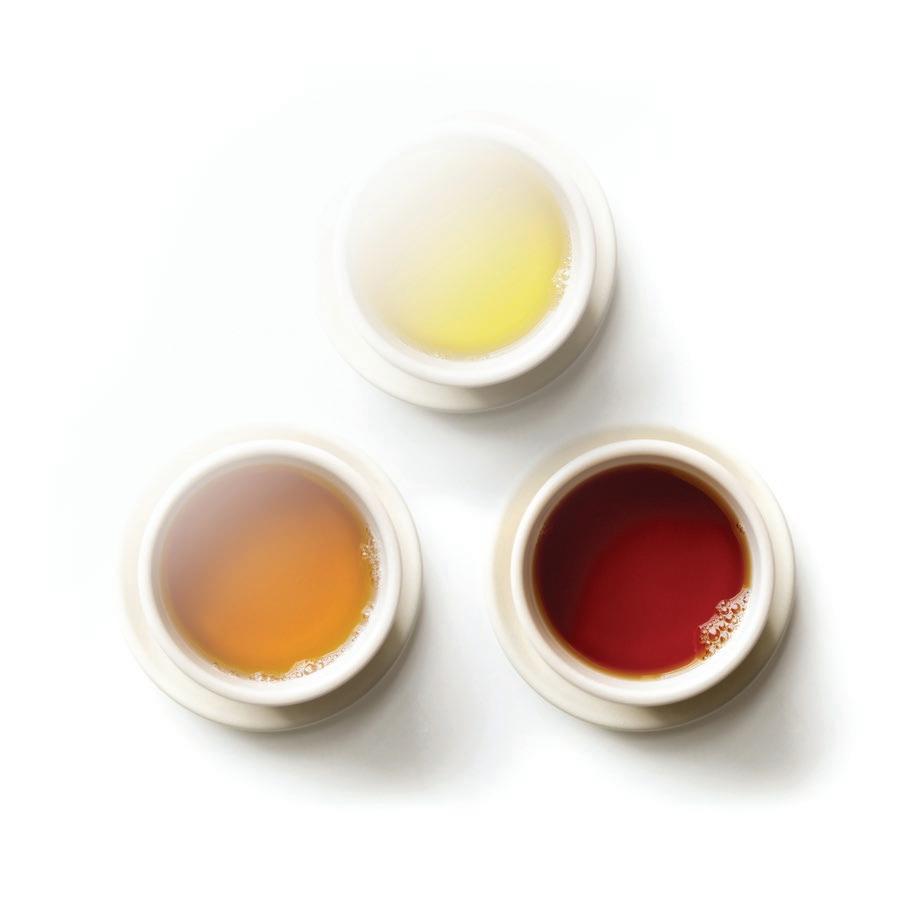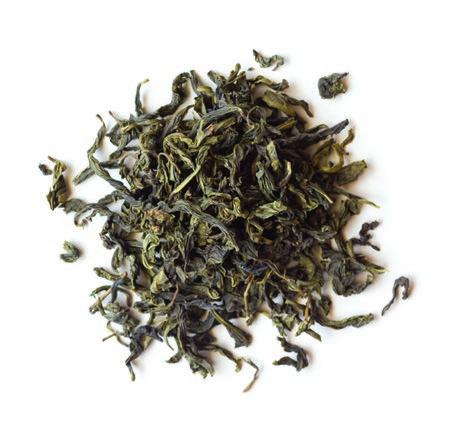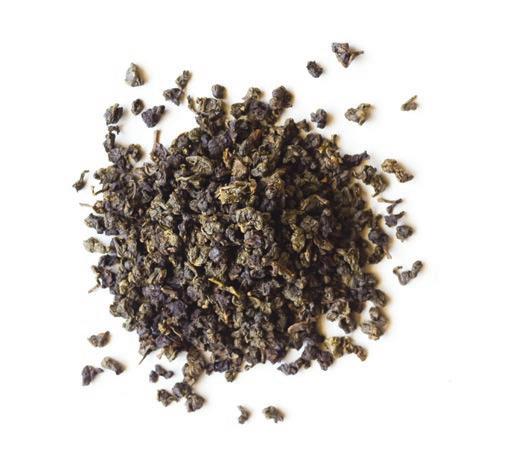
3 minute read
Oolong Tea
Oolong teas are some of the most artisanal teas in the world. Sought after by tea connoisseurs, oolong teas offer wonderfully complex aromatic profiles that are best savored slowly over the course of multiple infusions brewed in a traditional vessel such as a porcelain gaiwan. This style is often referred to as gongfu cha or “kung-fu tea,” alluding to the mindful attentiveness needed to brew tea this way.
Oolong teas are considered “semi-oxidized,” meaning that the extent of oxidation falls somewhere between that of most green and black teas. This is achieved with a tremendous amount of skill and intense focus from the artisan. The teamaker’s aim is to partially oxidize the leaf using special withering, tossing, rolling and shaping techniques. Certain oolong teas might also be roasted or baked to develop a nutty, caramelized sweetness via the Maillard reaction. The oxidation degree and roasting degree are two of the main characteristics by which oolong teas are evaluated.
Advertisement
A third and very important attribute of oolong tea is the cultivar or genetic strain of the tea plant. The botanical species of tea Camellia sinensis has two primary varieties: the “small-leaf” C. sinensis var. sinensis and the “broad-leaf ” C. sinensis var. assamica. Within each of these varieties are hundreds of unique subspecies that are referred to as cultivars. Tea tree cultivars are analogous to varietals of wine grapes. Just as some wines must be made from select grape varietals, so too must oolong teas be made from specific tea cultivars. There are over one hundred cultivars suited for oolong tea. Add to this the differences in region, elevation and harvest season, and it’s easy to see how there are myriad styles of oolong tea to explore.
The oolong process was developed during the 18th century within the fabled Wuyi Mountains of China’s southeastern Fujian province. Since then, the realm of oolong tea has expanded, but the traditional regions of production include Fujian, Guangdong province and Taiwan. With their impressive patience to yield multiple, changing infusions and their beautifully complex aromatics, oolong teas are especially treasured by wine sommeliers, baristas and other organoleptic sensory professionals.

BAO ZHONG
BZ250-RP ORIGIN: TAIWAN Ingredients: Oolong tea.
Bao Zhong is a lightly oxidized oolong tea from Taiwan that is harvested twice per year, with a spring crop in April and a winter harvest in December. Our Bao Zhong is made from the famous Qingxin tea cultivar, which presents a delicate palate with aromas of lilac and orchid when lightly oxidized.
The name Bao Zhong refers to the “wrapped style” of traditional processing, in which this tea undergoes a very light rolling in order to keep its twisted leaf shape, and an oxidation level of less than 20% is maintained to preserve ethereal, high floral aromas. Bao Zhong is alternatively spelled as Pouchong in the tea trade.

IRON GODDESS OF MERCY
IGOM-OP ORIGIN: NANTOU, TAIWAN Ingredients: Oolong tea.
Hand-crafted twice each year, in spring and winter, by a fourth generation artisan oolong teamaker in Mingjian Village in Taiwan’s central Nantou county. Our Iron Goddess of Mercy is made from Wuyi and Qingxin oolong tea cultivars and is crafted in the traditional style, with medium oxidation and moderate roasting through a controlled baking by electric brazier. This carefully managed process creates a smooth palate that exudes aromas of roasted buckwheat with a subtle note of dried apricot.
Also known by the name Tie Guanyin, Iron Goddess of Mercy is said to have been discovered by an elder farmer named Wei who lived in the province of Fujian. Wei was a poor, but pious man who hiked the long trail to tidy up the dilapidated village temple every week. The merciful bodhisattva Guanyin visited Wei in a dream, telling him to check behind the temple for a gift in honor of his dedication. Wei awoke the next day to find a tea tree growing behind the temple. He cultivated the tea plant and found it made a most fragrant infusion. He shared the seeds with his friends and to this day, the Tie Guanyin cultivar is said to have derived from this legendary lineage.










